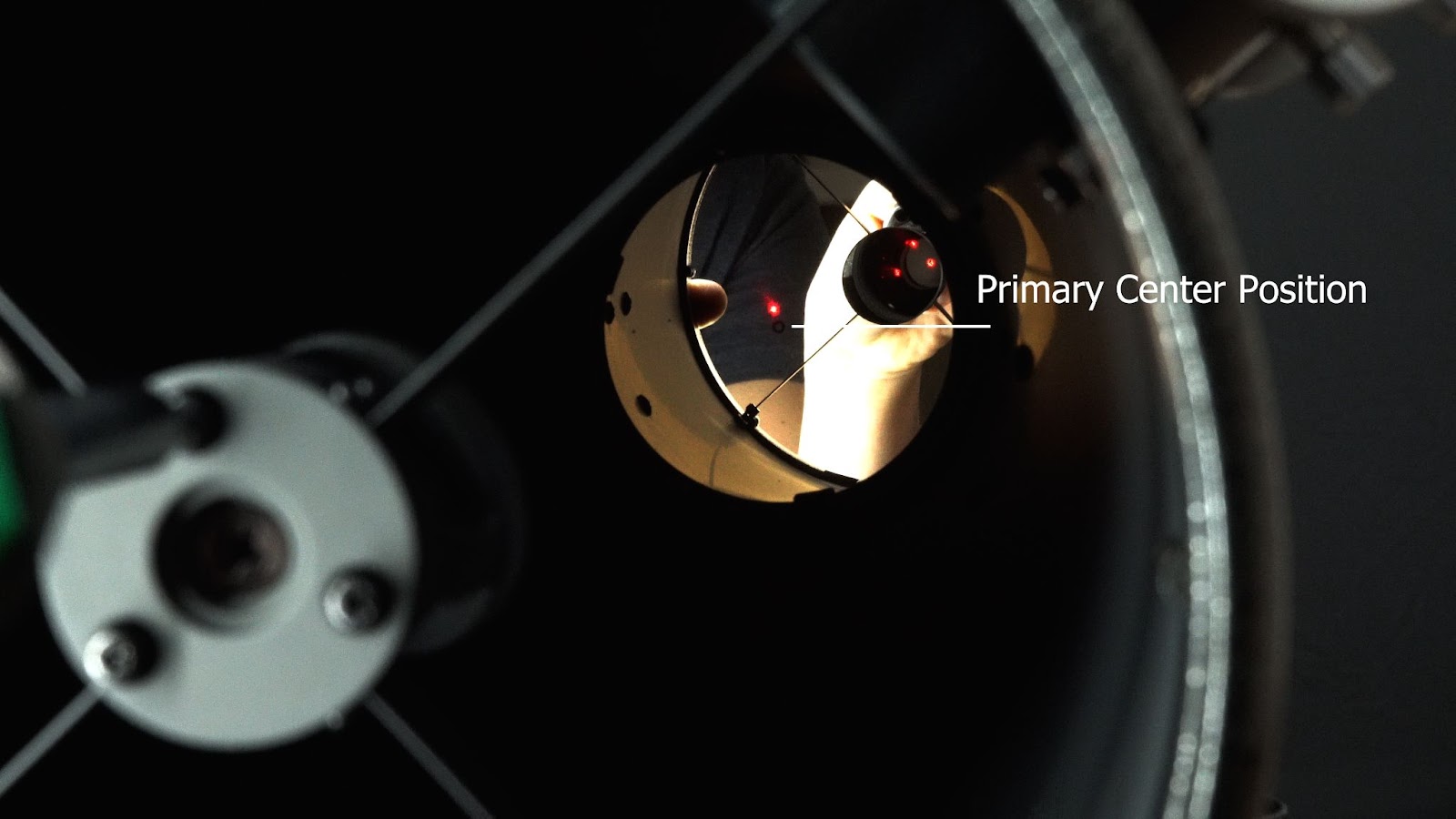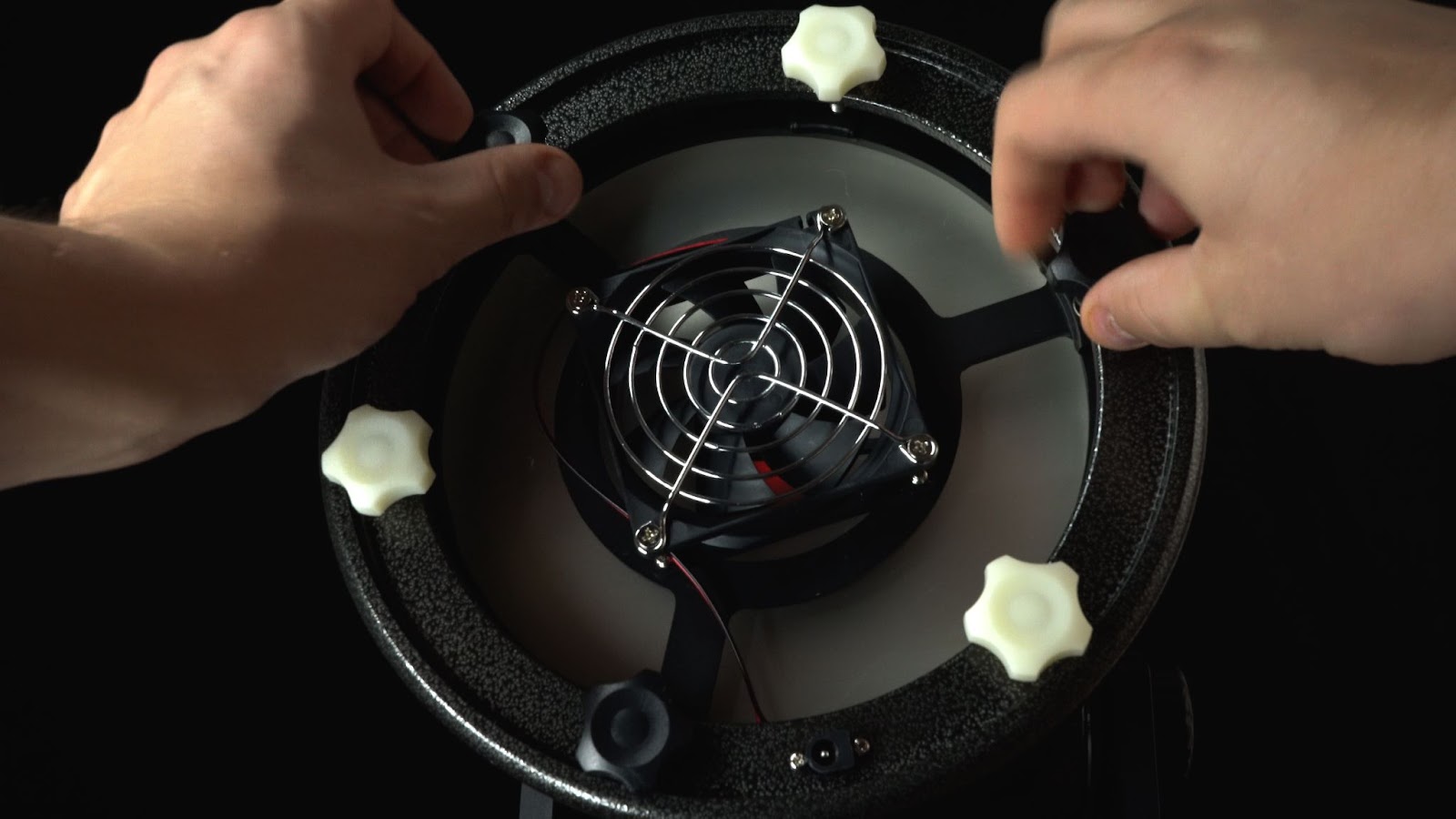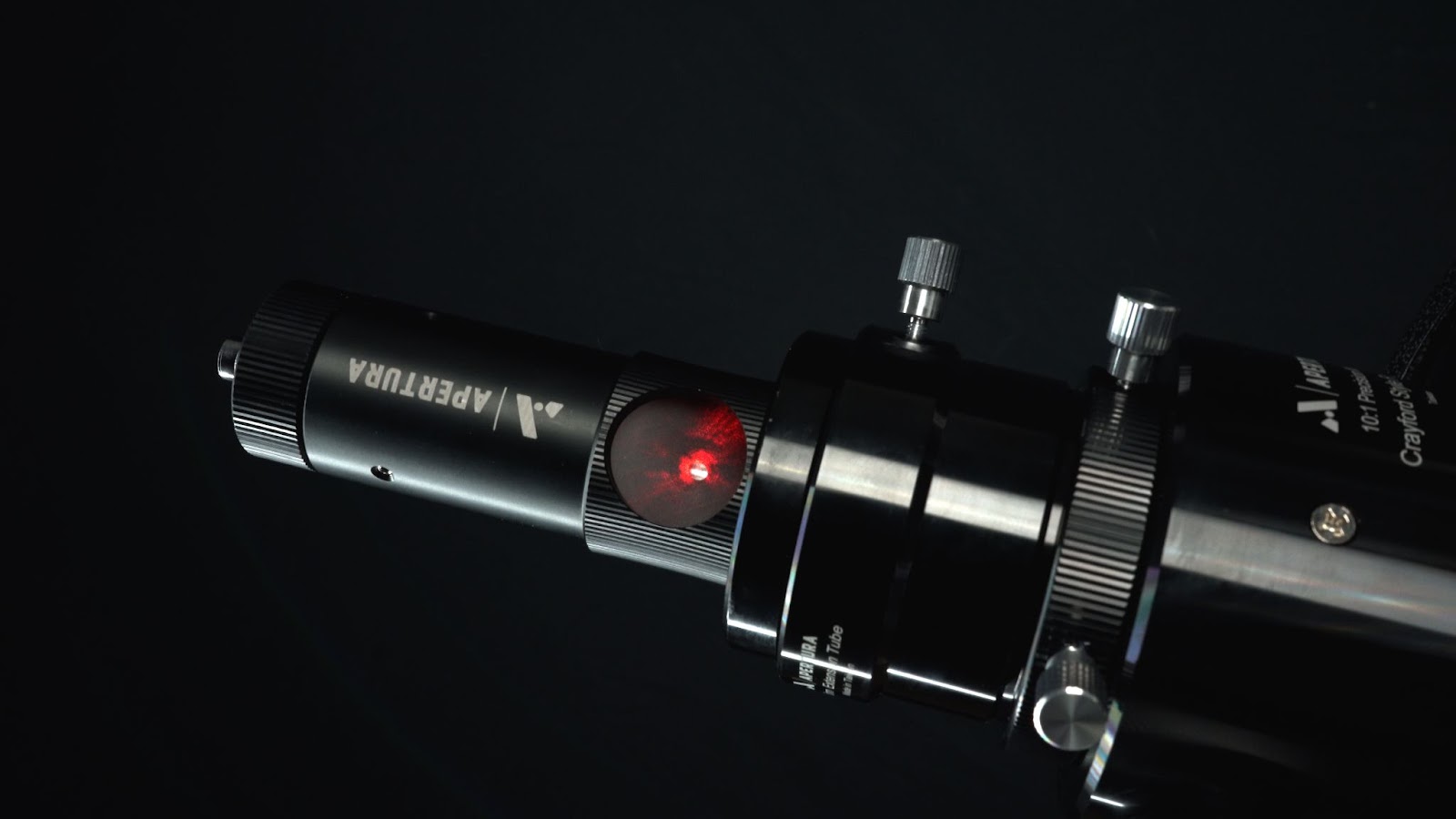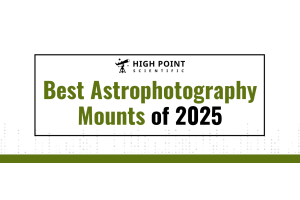
There are several ways you can improve your views through your Apertura AD8 and good collimation is likely the most crucial! Collimation is the process of aligning your primary mirror and secondary mirror with your eyepiece to provide the sharpest views possible. A laser collimator does come included with the AD8 and will allow you to complete the collimation process in under two minutes. This quick written guide and our instructional video below will show you how to do it!
Step 1
First start out by removing your eyepiece if already installed from the Dobsonian. Simply slide the laser collimator into the 1.25” eyepiece adapter and tighten it down. Make sure the polished 45-degree slanted angle is downward facing towards the primary mirror (See image 1). Power on your laser (See image 2).
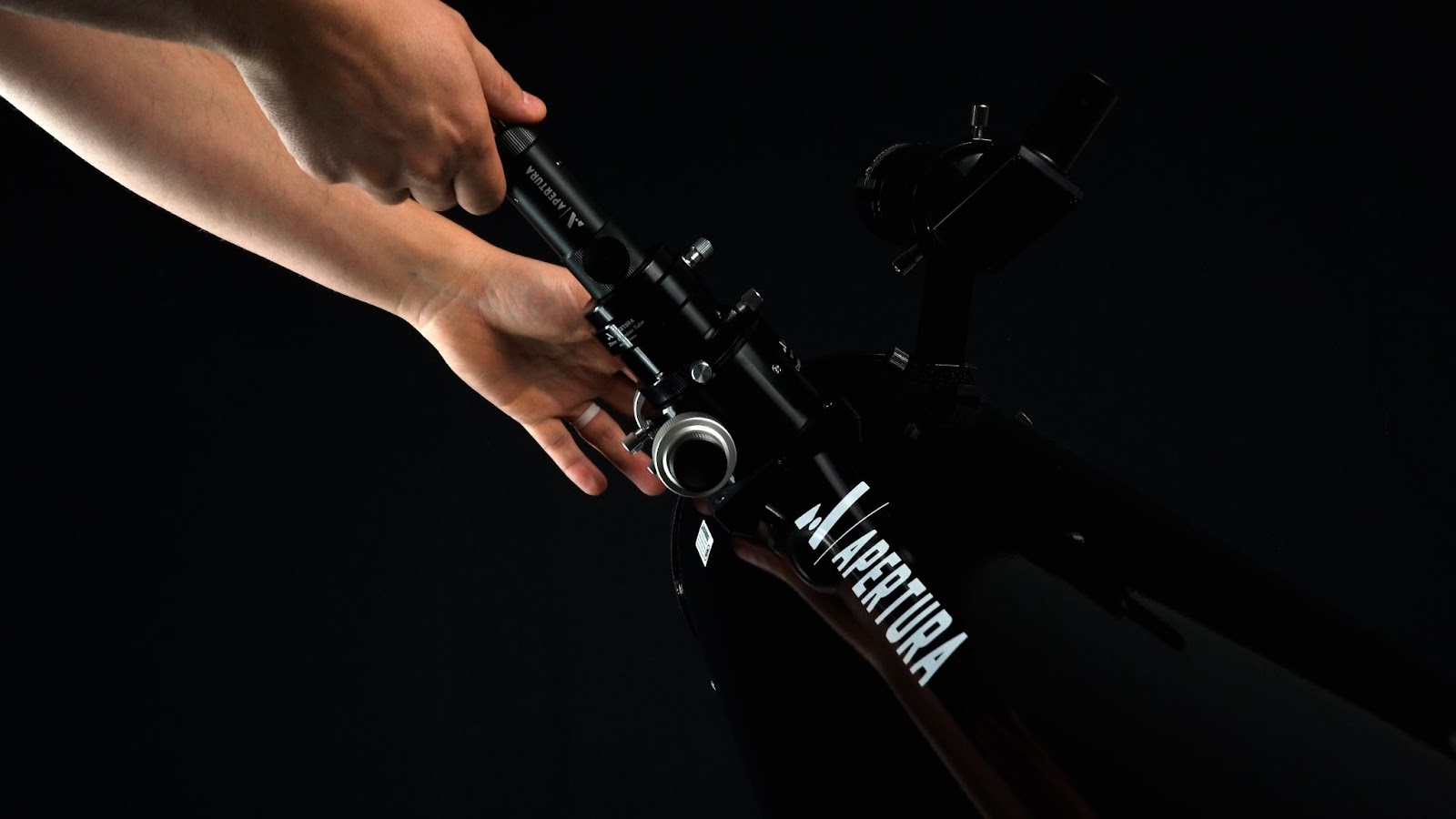 Click to Enlarge Image
Click to Enlarge Image
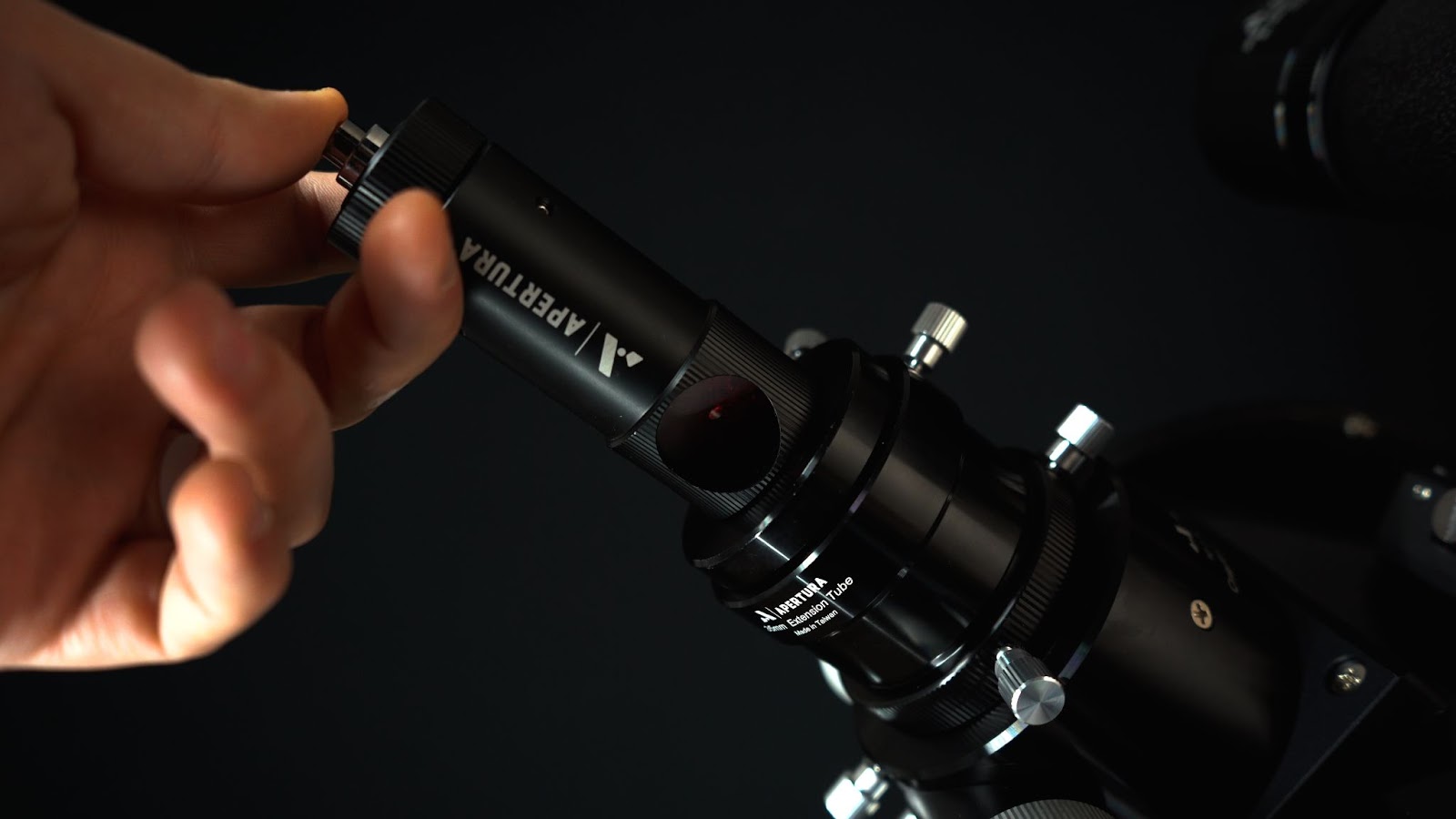 Click to Enlarge Image
Click to Enlarge Image
Step 2
Now we want to align the secondary mirror to the primary mirror. To do this, you will need a Phillips screwdriver to adjust the hex screws here on the secondary mirror housing (See image 3). We recommend that you place the scope in a horizontal position to avoid dropping your screwdriver down into the OTA and damaging the primary mirror. You want to make small adjustments to the secondary screws so that the laser hits the center spot on the primary mirror. You can incrementally loosen or tighten these screws to make your necessary adjustments When aligned, be sure to snug up each screw so that it is not loose. Your laser should now be centered on the primary mirror (See image 4).
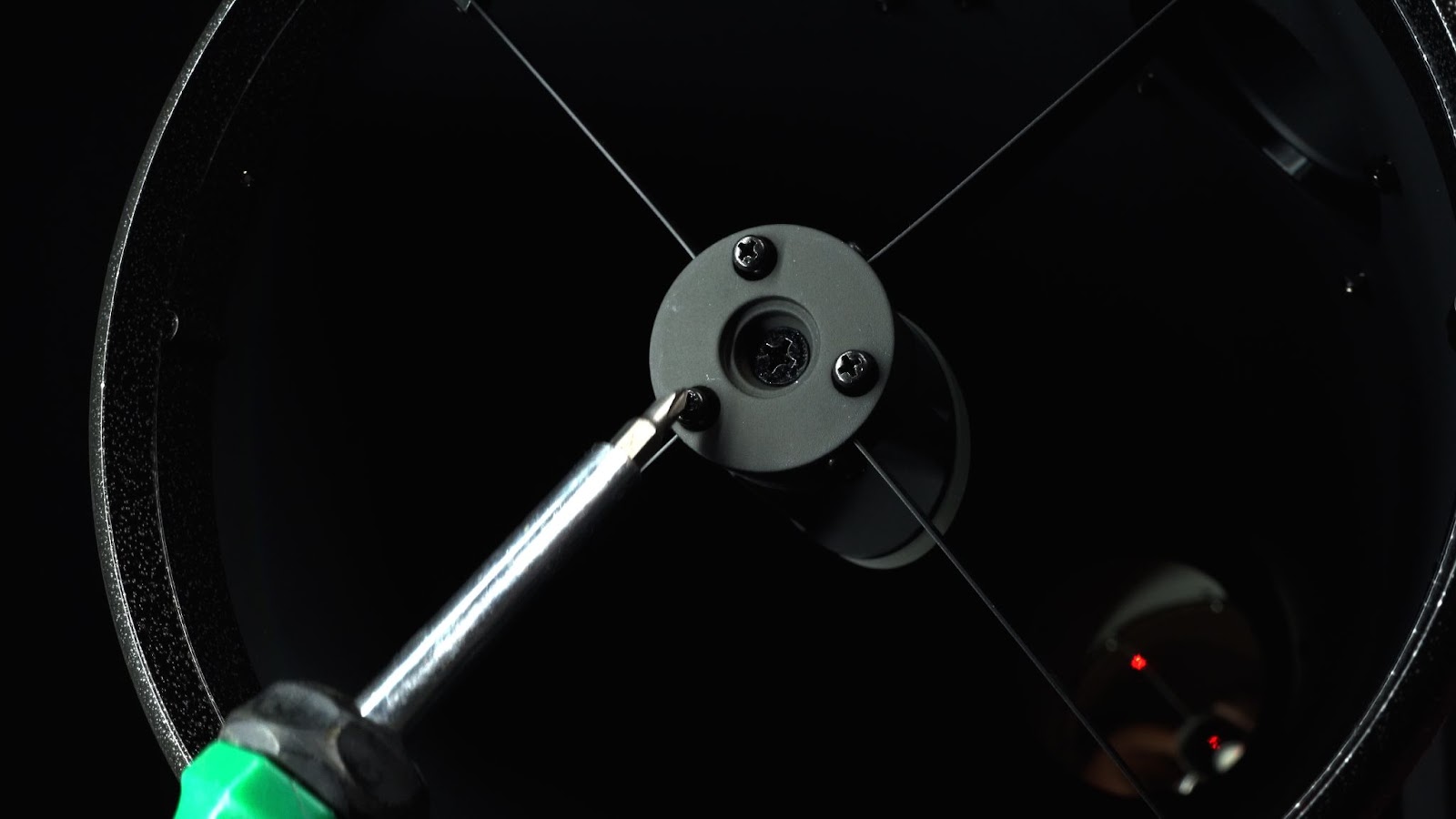 Click to Enlarge Image
Click to Enlarge Image
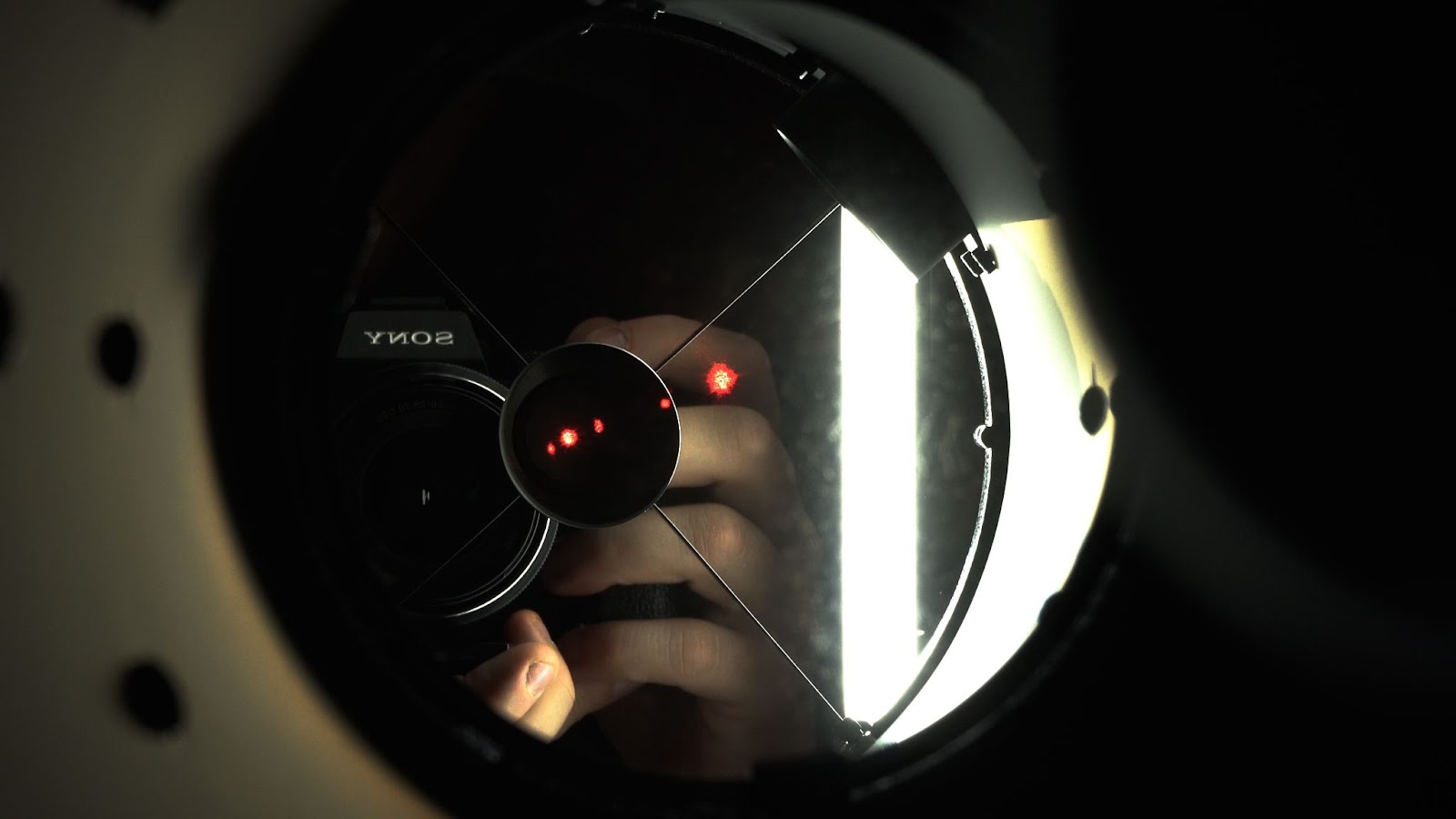 Click to Enlarge Image
Click to Enlarge Image
Step 3
Now we align the primary mirror. The goal here is to align the primary so that the laser returns back to the laser, hence the 45-degree reflective surface (See image 5). Loosen the three white thumb screws that lock the mirror in place. Now we can make adjustments by tightening or loosening the black knobs (See image 6). Slowly make adjustments as you watch the laser move across the 45-degree surface on the laser collimator. You want to make the necessary adjustments so that the laser is returning to the center spot on the collimator (See image 7). When this step is finished, you have completed the collimation process!

Learn More
Interested in learning more about your telescope? Not sure where to begin? Check out our Astronomy Hub!
This Article was Last Updated on 07/26/2023





